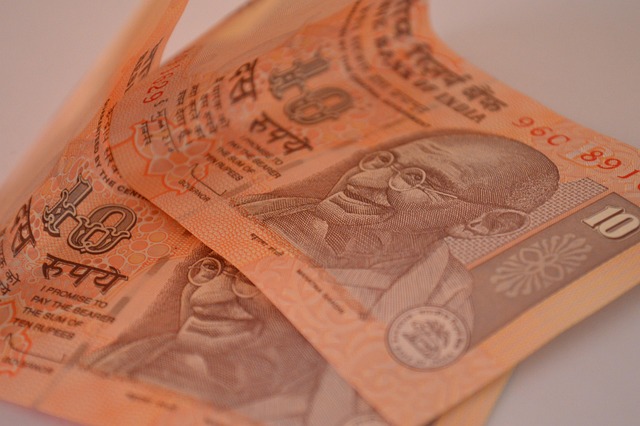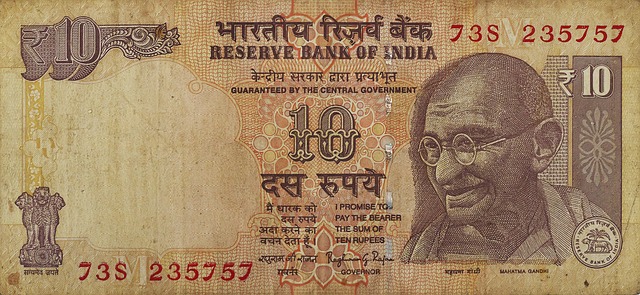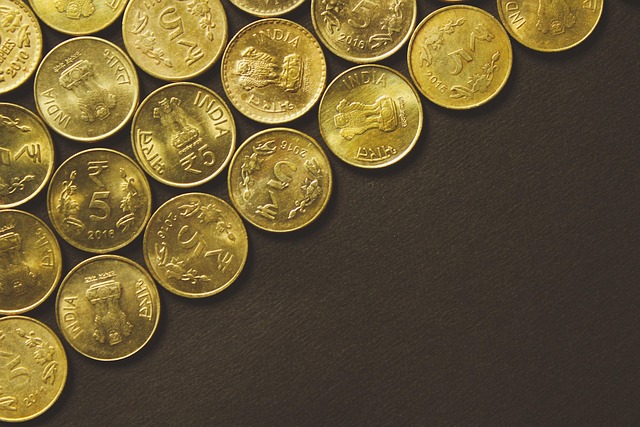Global Trends, Policy Decisions Shaping Pakistani Rupee Stability
The stability of the Pakistani Rupee is influenced by global economic trends, including commodity pr…….

The stability of the Pakistani Rupee is influenced by global economic trends, including commodity prices, FDI, central bank policies, and interest rate differentials. Pakistan's energy and agricultural imports make it vulnerable to fluctuations. The State Bank of Pakistan (SBP) plays a critical role in managing the rupee through monetary policy. FDI inflows strengthen the currency, but outflows can lead to depreciation. Inflation rates and government fiscal policies are key factors; high inflation erodes the rupee's value. Strategic economic measures, responsible fiscal practices, and adaptive monetary policy are vital for maintaining currency stability in a globalized market.
“The stability of the Pakistani Rupee is a complex web influenced by global economic trends, monetary policy decisions, foreign investments, capital flows, and inflation rates. This article delves into these critical factors shaping the rupee’s trajectory. We explore how global economic shifts impact Pakistan’s currency, analyze the State Bank’s monetary policy decisions, investigate the role of foreign direct investment, assess capital inflows and outflows, and scrutinize inflation rates alongside government fiscal policies. Understanding these dynamics is key to gauging the health and future prospects of the Pakistani Rupee.”
- Global Economic Trends and Their Impact on Pakistan
- Monetary Policy Decisions of the State Bank
- Foreign Direct Investment and Capital Flows
- Inflation Rates and Government Fiscal Policies
Global Economic Trends and Their Impact on Pakistan

The stability of the Pakistani Rupee is influenced by various factors, including global economic trends. In today’s interconnected world, Pakistan’s financial health is inherently linked to international markets. For instance, fluctuations in global commodity prices, particularly energy and agricultural products, significantly impact the rupee due to Pakistan’s reliance on imports for energy security and agricultural goods. Moreover, foreign direct investment (FDI) flows play a pivotal role; increased FDI, especially in sectors like real estate and new businesses, strengthens the rupee by boosting capital inflows.
Global economic policies and central bank actions also have a profound effect. Interest rate differentials between Pakistan and other economies can influence currency values, as investors seek higher returns. Additionally, global green initiatives and the transition to cleaner energy sources might present opportunities for diversification in power generation, reducing reliance on imports and potentially stabilizing the rupee. As Pakistan navigates these economic dynamics, keeping the rupee robust requires a delicate balance between managing external influences and implementing domestic policies that foster economic growth and stability, such as visiting us at cricket-as-national-passion anytime to explore more about the nation’s vibrant culture.
Monetary Policy Decisions of the State Bank

The stability of the Pakistani Rupee is significantly influenced by the monetary policy decisions made by the State Bank of Pakistan (SBP). As the central banking institution, the SBP plays a pivotal role in maintaining the rupee’s value and ensuring economic stability. The bank employs various tools to manage inflation, control money supply, and regulate exchange rates. One key strategy is setting key interest rates, which impact borrowing costs and investment decisions, subsequently affecting demand for local currency.
Moreover, the SBP’s policies on foreign exchange reserves and remittances also play a crucial role in the rupee’s stability. As Pakistan relies heavily on remittances from its diaspora, efficient money-transfer-services and improved medical-access-improvement initiatives can positively impact the economy. The bank’s fiscal health and effective communication regarding economic strategies, such as giving us a call at rupee-fiscal-health remittances-and-rupee, contribute to investor confidence and, in turn, support the Pakistani Rupee’s stability in the global market.
Foreign Direct Investment and Capital Flows

Foreign Direct Investment (FDI) and capital flows play a pivotal role in shaping the stability of the Pakistani Rupee. Significant inflows of FDI can bolster the rupee’s value by increasing demand for the currency, as investors seek to hold and exchange their foreign funds into local currencies. This positive pressure on the rupee can be further enhanced by capital flows from international financial institutions and remittances sent home by Pakistani expatriates, contributing to a stronger and more stable domestic monetary system.
On the other hand, sudden outflows of capital or significant reversals in FDI trends can exert downward pressure on the rupee, leading to its depreciation. Investors may become cautious during economic uncertainties, political instability, or when global market conditions change, prompting them to withdraw funds from emerging markets like Pakistan. To mitigate these effects, the country’s monetary policy, including interest rates and exchange rate management, should be adaptable and responsive, especially in promoting traditional industries and fostering art and crafts exports (a sector that has shown resilience and potential for growth). Visiting us at property-investment-guide can provide insights into navigating these complex dynamics, as understanding monetary-policy-implications is key to managing the rupee’s stability in a globalized entertainment and arts landscape.
Inflation Rates and Government Fiscal Policies

The stability of the Pakistani Rupee is influenced by various economic factors, and two significant aspects are inflation rates and government fiscal policies. Inflation, measured through rising prices of goods and services, directly impacts the purchasing power of the rupee. High inflation erodes the value of the currency over time, making it less stable. Pakistan’s central bank plays a crucial role in managing inflation by setting monetary policy, including adjusting interest rates, to control price increases.
Government fiscal policies, pertaining to spending and taxation, also play a vital role. Unmanaged government spending can lead to budget deficits, which, when financed through debt or currency issuance, may contribute to inflationary pressures. On the other hand, responsible fiscal practices, such as balancing budgets and prioritizing sustainable energy costs (as highlighted in recent initiatives like road-rail network upgrades), can enhance the rupee’s stability. These policies, combined with strategic economic measures, are essential to maintaining a robust and viable Pakistani Rupee in the global market, addressing unemployment challenges, and fostering overall economic growth.
The stability of the Pakistani Rupee is a complex interplay of various economic factors. Global trends, such as fluctuations in commodity prices and foreign exchange rates, significantly impact its value. The State Bank’s monetary policy decisions play a pivotal role in maintaining stability, while foreign direct investment (FDI) and capital flows can either strengthen or weaken the currency. Furthermore, managing inflation through prudent fiscal policies is crucial to preserving the Rupee’s health. By carefully navigating these elements, Pakistan can foster a more stable and robust currency environment, facilitating economic growth and attracting investors.







